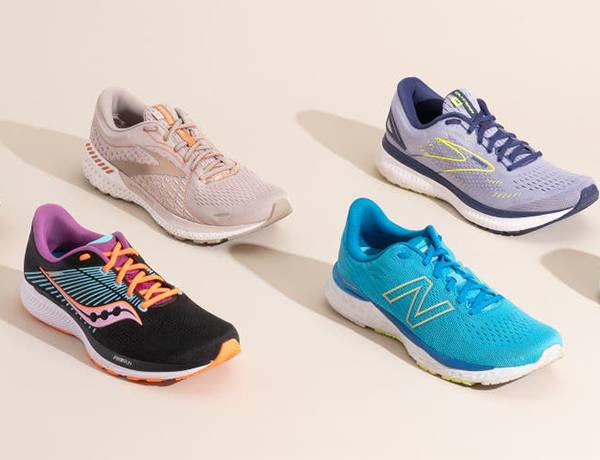Nothing can irritate business owners more than cart abandonment in the hectic world of e-commerce! It is comparable to nearly sealing a deal and faltering at the last hurdle.
Did you know that an astounding 70% of online shopping carts are abandoned, quite frequently? Yes, each year, products worth billions of dollars are left behind. Retailers are facing large revenue losses due to an average abandonment rate of 72%.
Therefore, come along as we explore the common causes behind this act as well as some amazing tactics to address this issue as we dive into the world of cart abandonment.
What Is Shopping Cart Abandonment?
When a user adds items to their online shopping cart but then departs the website without making a purchase, this is known as shopping cart abandonment. It is comparable to putting items in a real shopping cart at a store and then abandoning it before checking out.
Merely 2% of cart abandoners make a conversion on their first visit, whereas 75% intend to return. A customer needs to engage with a business five times before deciding to buy.
Retailers monitor this because it indicates the number of customers who nearly made a purchase but decided not to. By dividing the total number of started purchases by the number of completed purchases, the rate is determined.
A high abandonment rate may indicate that the website needs to be fixed to make it easier for users to make purchases. To increase sales and encourage more customers to complete their purchases, retailers strive to streamline the checkout process.
What Causes Cart Abandonment?
1. Surprise Charges:
Customers frequently decide not to proceed with a purchase when they discover unanticipated expenses like taxes and shipping charges at the point of sale. As per Statista, 63% of people abandon their carts due to unexpected expenses, such as high delivery fees or hidden costs. After seeing the total, some customers might even leave their carts, which would result in missed sales opportunities.
2. Complicate check-outs:
Complicated and drawn-out checkout procedures discourage 17% of customers from finishing their purchases. Users looking for a quick and easy experience become frustrated by extra steps and form fields that slow down the process.
3. Uncertain Total Costs:
Customers want pricing to be transparent, including taxes and shipping charges. 16% of people abandon their cart due to not being able to see the cost or calculate the total. They might add things to their cart to determine the total cost if they don't receive clear information upfront.
4. Website Performance Problems:
Customers flee in search of a better user experience when they encounter severe performance problems, such as crashes and errors. To avoid unhappy customers, even small performance issues should be fixed as they can negatively affect the user experience.
5. Poor Return Policy:
After adding items to their cart, customers frequently get information about return policies. 12% of the respondents have considered, that inadequate return policies influence the purchasing decisions by causing them to abandon their carts in favor of more appealing options elsewhere.
6. Foreign Currency Pricing:
Customers may become confused and look for alternatives if prices are displayed in a foreign currency. Pricing in local currencies enhances user experience and keeps customers from leaving their carts empty because of exchange rate worries.
7. Product Research Abandonment:
When consumers add products to their carts during browsing or research, they frequently do so because they don't know enough about the deal. Preventing abandonment and increasing conversion rates can be achieved by providing thorough product details upfront.
8. Site Speed and App Performance:
Customers may lose faith in your brand if they encounter confusing user interfaces or slow performance. According to Google, customers will leave a website that takes longer than 3 seconds to load. Maintaining credibility and averting customer dissatisfaction requires improving website availability and uptime, particularly during busy shopping seasons.
9. Form Account to Make a Purchase:
Let's say you are prepared to purchase the ideal product that you have discovered online. However, before completing your transaction, you are prompted to register for an account. It can be annoying to have to fill out so many forms and take time to create an account. And, this is why 34% have accounted for this as the second most problematic reason.
10. Extended Delivery Times:
The customers may become irate if anticipated delivery times are only disclosed at the point of checkout. Of all online shoppers, 45% look for sites that offer free delivery. But almost 25% will leave their carts empty if there's a big wait for the product after they place their order. To meet customer expectations and avoid cart abandonment, businesses need to provide clear and timely delivery information, as consumers are expecting shorter delivery windows.
11. Different Website to Finish the Payment:
Occasionally, when you go to pay online for your order, you are taken to a different website. When a business uses an external payment gateway, such as the checkout page of a service provider, this frequently occurs. But switching from one reliable website to another can feel a little weird and raise questions about security.
How to Reduce Shopping Cart Abandonment?
1. Select a Reliable E-commerce Platform: It is essential to choose a reliable e-commerce platform with a responsive design. It aids in reducing cart abandonment, as 13% of customers leave the checkout due to website errors or crashes.
A lot of people shop online using tablets and smartphones, so you might be losing business if your website is sluggish or challenging to use on these devices. Choose a platform (like one of Shopify's responsive themes) that adapts the layout to the device being used.
Furthermore, think about using apps such as Keeper, which maintains the items in a customer's cart even if they exit the website and come back later.
2. "Save For Later" button: A lot of customers use their carts to save things they want to buy later but aren't ready to buy right now. Giving customers the option to "Save For Later" allows them to move items from their cart into a wishlist. Keeping the products at the forefront of customers' minds, not only lowers cart abandonment but also promotes future sales.
3. Offer Free or Reduced Shipping: Of those surveyed, 28% want a variety of shipping options, and 58% prefer free or discounted shipping. Thus, you might think about including shipping costs in the price of your products or giving free shipping on orders that total more than a specific amount. If it's not feasible, look into options like free local delivery or lightweight packaging to lower cart abandonment.
4. Replace Extra Links with Cart Abandonment Pop-Ups: Minimise distractions by avoiding pointless links and upsell opportunities that can discourage customers from finishing their purchases. Instead, focus on cart pop-ups.
Reluctant customers are encouraged to rethink their purchase by popup messages, which frequently offer alluring discounts. Cart abandonment rates are lowered because nearly two out of ten visitors who are about to abandon their cart decide to finish it, with an average conversion rate of 17.12%.
5. Make It Simple to Edit the Cart: Give customers clear options for deleting items, modifying quantities, and modifying shipping preferences so they can easily edit their carts. Provide clear instructions and user-friendly icons to assist clients in navigating the process with ease.
6. Multiple Payment Options: To accommodate varying customer preferences, make sure to provide a range of payment options. The days of typing credit card numbers are long gone. 12% of users report that there are insufficient payment options, which highlights the need for a variety of choices. Accept options such as shopping apps (Shop Pay, PayPal), digital wallets (Apple Pay, Samsung Pay, Google Pay), and buy now pay later services ( AfterPay).
7. Highlight Your Returns Policy: To reassure customers, make sure to clearly display your returns policy during the checkout process. 10% percent of customers abandon their purchases in the middle due to unsatisfactory return policies. An unambiguous communication strategy regarding your no-risk purchase policy can allay fears and lower cart abandonment rates.
8. Boost Speed: When a website takes too long to load, users become irritated. 15% cite a timeout and 24% cite a website crash as reasons they didn't finish their purchases. Focus on speed by implementing strategies like lazy loading and routinely evaluating the functionality of your website to avoid this. Lower load times are important because customers tend to remember negative experiences.
9. Transparent Pricing: 63% of abandoned carts are the result of unforeseen expenses, such as shipping charges. It is important that the product page display all expenses up front, including shipping and taxes. Don't let higher prices catch customers off guard when they check out. To establish credibility and trust, think about adding taxes to product prices and emphasizing free shipping thresholds.
10. Checkout with a One-Click Option: Shop Pay and other features that enable one-click checkout can help to streamline the checkout process. Simplifying and expediting the purchasing process for customers can greatly increase conversion rates. Customers who use Shop Pay can complete transactions with a single tap because their information is securely saved for use in the future.
11. Follow-Up with Quick E-mail: You can get items back from customers who leave items in their online shopping cart. Send an e-mail within the first hour by using email marketing and retargeting tools. Sending three follow-up emails can increase orders by up to 69%, according to research, compared to sending just one. Take advantage of this brief but important window of opportunity to reach out to customers again and persuade them to finish their purchase.
How to Prevent Shopping Cart Abandonment?
1. Boost Product Pages to Increase Interaction:
Longer decision-making processes and higher price points result in a higher cart abandonment rate. For example, it reaches 84.49% for jewelry and 90.50% for furnishings.
Therefore, make compelling product pages to pique customers' interest and boost chances of sale. Start by presenting your products in crisp, high-quality photos and videos. Next, write in-depth summaries that focus on the features and advantages while considering your target audience.
To establish trust, include social proof in the form of reviews or testimonials. Spiegel Research Centre found that a product's likelihood of being purchased increases by 270% after five reviews.
2. Use a Progress Indicator to Lead Clients:
On checkout pages, a progress indicator makes it easier for customers to see where they are in the process. It reassures them they're almost done and lessens the fear of a drawn-out checkout process. According to studies, e-commerce sales worth $260 billion could be recovered through checkout optimization.
3. Provide Support Choices on the Order Page:
During the checkout process, give customers the option to chat or call for prompt resolution of any questions or concerns. Customers may abandon their carts due to a lack of support, which could harm your brand's reputation.
4. Product Page and Cart Continuity:
There are 39 areas on average where a site could be improved for checkout. By showing a thumbnail of the item in the cart, you can keep customers clicking through from the product page to the cart. Customers can make any necessary corrections with this visual confirmation, which reassures them that they have added the correct item.
For a more in-depth view and to increase customer confidence, think about including a zoom feature.
5. Test and Optimise with A/B Testing:
Often referred to as split testing, A/B testing assists you in determining the most effective phrases and layouts to lower cart abandonment.
According to Gartner, every year, e-commerce businesses lose $18 billion in sales revenue. Utilize this technique as it entails displaying various iterations of your campaigns or webpages to visitors and selecting the most effective one. You can quickly perform split tests to find the most effective offers, headlines, colors, and calls-to-action with tools like OptinMonster.
Conclusion
To sum it up, businesses can optimize their websites by knowing why customers abandon carts, from complicated checkout processes to hidden costs. Now, that you’re fully aware of the reason for abandoned carts, utilize the above tactics to improve the customer shopping experience, by taking care of these problems upfront.


